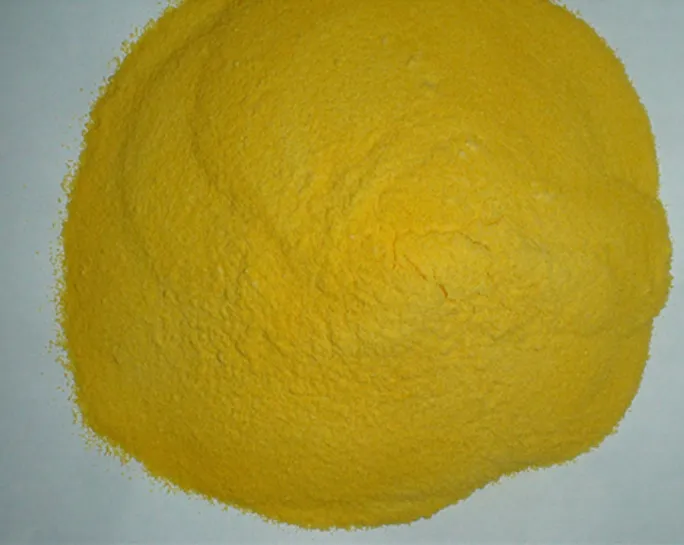what is poly aluminium chloride
Understanding Poly Aluminium Chloride A Comprehensive Overview
Poly Aluminium Chloride (PAC) is a versatile chemical compound that plays a critical role in various industries, particularly in water treatment processes. It is a type of inorganic polymer that is aluminum-based and is highly effective in coagulation and flocculation, which are essential procedures in the purification of water. The unique properties of PAC make it a preferred choice over traditional coagulants like aluminum sulfate in many applications.
What Is Poly Aluminium Chloride?
PAC is primarily formed through the hydrolysis of aluminum salts and consists of a range of aluminum polymers. The basic formula can be represented as Aln(OH)mCl3n-m, indicating that it is a combination of aluminum ions, hydroxyl groups, and chloride ions. The structure of PAC allows it to have a high charge density, which is crucial in water treatment. In addition to its significant use in drinking water purification, PAC is also utilized in wastewater treatment, paper manufacturing, and even in the textile industry as a dye fixative.
Advantages of Poly Aluminium Chloride
The use of PAC in water treatment comes with several advantages. First and foremost, PAC has a higher coagulation efficiency compared to traditional coagulants. This efficiency allows for the formation of larger and denser flocs that can sediment more quickly, thereby enhancing the overall purification process.
Another benefit is its ability to work effectively across a wide range of pH levels. While traditional coagulants might require specific pH conditions for optimal performance, PAC can function efficiently from acidic to neutral pH levels. This flexibility enables water treatment facilities to operate under varying environmental conditions without compromising efficacy.
Furthermore, PAC typically generates less sludge compared to conventional coagulants, which leads to lower disposal costs and a reduced environmental footprint. This is particularly important in large-scale water treatment facilities where sludge management can become a significant operational challenge.
what is poly aluminium chloride

Applications of Poly Aluminium Chloride
The applications of PAC extend beyond water treatment. In the paper industry, it is used as a retention aid, helping to improve the quality of paper by enhancing the bonding of fibers and fillers. The use of PAC in the textile industry, particularly as a mordant, aids in dyeing processes by fixing dyes to fabrics, ensuring more durable and vibrant colors.
Moreover, PAC is also used in the pharmaceutical industry and for the production of various chemical compounds, emphasizing its versatility. It is also employed in agriculture for soil improvement and as an additive in fertilizers due to its aluminum content, which can enhance the nutritional profile of certain soil types.
Safety and Environmental Considerations
Though PAC is generally regarded as safe when used according to guidelines, it is essential to consider its potential impacts on health and the environment. Proper handling and dosing are crucial, as excessive amounts can lead to aluminum accumulation in aquatic systems, which could pose risks to aquatic life. Regulatory bodies monitor PAC usage to ensure that it meets safety standards and does not harm human health or the environment.
Conclusion
Poly Aluminium Chloride stands out as a valuable compound in the realm of water treatment and beyond. Its superior coagulation performance, operational flexibility, and broader applications make it a preferred choice in various industries. As the demand for effective water treatment methods continues to rise globally, PAC’s role is likely to expand, reinforcing its significance in ensuring clean and safe water for communities worldwide. Its diverse applications in other sectors further underscore the importance of understanding and utilizing this chemical wisely, balancing efficiency with environmental stewardship.
-
Understanding Polycarboxylic Acids: Properties, Applications, and Future PotentialNewsJul.28,2025
-
Scale Inhibitor Explained: How to Protect Your System from Limescale and Hard Water DamageNewsJul.28,2025
-
Scale and Corrosion Inhibitors: Essential Chemicals for Industrial Water System ProtectionNewsJul.28,2025
-
Polyaspartic Acid: A Biodegradable Polymer for Sustainable ChemistryNewsJul.28,2025
-
Isothiazolinones: A Versatile Antimicrobial Class with Industrial Power and Regulatory ChallengesNewsJul.28,2025
-
A Deep Dive into 2-Phosphonobutane-1,2,4-Tricarboxylic Acid (PBTC)NewsJul.28,2025





